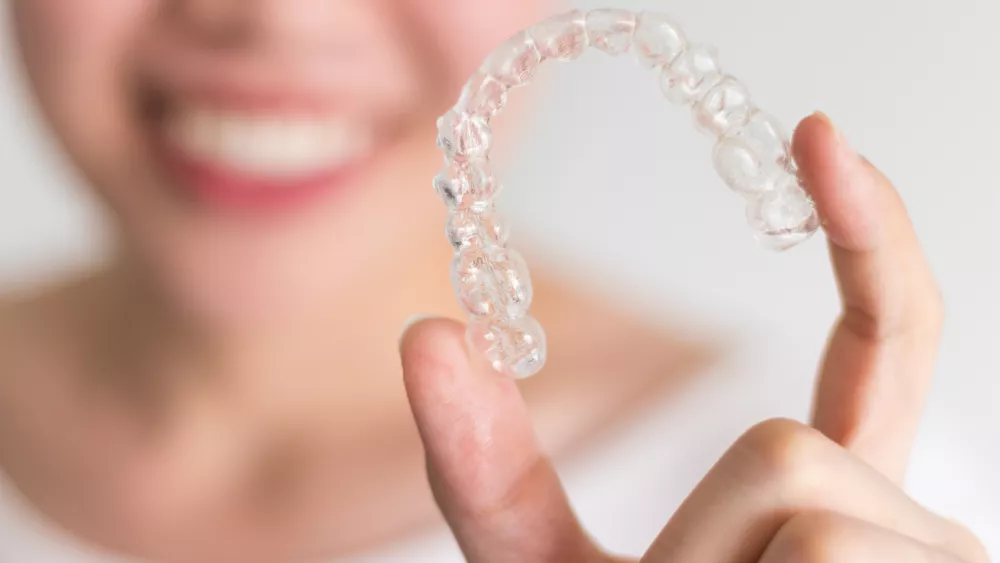April 21, 2022
When it comes to orthodontics, patients are often forced to choose between two options: braces or Invisalign. But, how do you decide which is the best option for you?
Both Invisalign and braces have their shortcomings and benefits. In this article, we will compare and contrast these two options for correcting your smile.
While you should visit an orthodontist before making a final decision, we hope that this article helps you determine which treatment option is right for your needs.
Invisalign vs. Braces: Which Will Cost Less?
No matter which treatment you choose, one thing is certain: the price tag might not be an easy pill to swallow. The cost of braces and Invisalign depends on several factors, including the severity of your case and where you live.
According to one dentist in New York City, the price of Invisalign in his practice is $6,000 to $7,000, while the cost of traditional braces is $5,000 to $6,000.
However, those prices are considerably higher than the average in the United States. According to Real Self, the national average cost of Invisalign is $4,975 while the average cost of braces is $4,800.
Luckily, many dental insurance plans cover Invisalign to the same extent as braces. In addition, most orthodontists offer a monthly payment plan to cover the cost of treatment.
That being said, if your top priority is spending as little money as possible, braces are typically the most affordable option.
Invisalign vs. Braces: Which Takes Less Time?
Every smile is different, but we estimate that most adults with mild to moderate misalignment can achieve their goal in 12 to 18 months of Invisalign treatment. By comparison, braces typically take between 18 to 24 months to complete treatment. So in general, you can expect Invisalign to require less time than traditional braces.
Invisalign vs. Braces: Which is Less Painful?
Generally speaking, Invisalign patients tend to feel less pain and discomfort than patients with braces. This is backed by a small study from 2017, which found that patients with braces experienced more pain.
However, the pain level of braces depends on which type you choose. Clear ceramic braces are less noticeable than metal braces, but they can cause greater discomfort than traditional metal braces because they aren't as stable and tend to rub against your cheeks and gums more often.
Invisalign treatment isn't painful, although some people may experience discomfort after the aligners are switched out for the next set in the treatment plan. This is normal, and the discomfort can be relieved with over-the-counter pain relievers.
Braces are a slightly different story. Traditional metal braces can be painful for about a week or two after each adjustment appointment with your orthodontist. Depending on your treatment plan, you may get adjustments every month or every other month, so you'll have to put up with some pain every few weeks.
Invisalign vs. Braces: Which is Most Effective?
Both braces and Invisalign can straighten teeth, close gaps, and correct overbites or underbites. They’re both highly effective in different ways.
Braces require that you visit your orthodontist regularly for adjustments, but leave your teeth noticeably different from the start. Unlike braces, Invisalign requires fewer visits with the orthodontist and straightens your teeth in a more subtle way.
Invisalign is an effective treatment for your smile, but it’s not for everyone. According to research from 2019, Invisalign is less effective at producing significant improvements. Therefore, Invisalign is best suited for patients with minor orthodontic problems, such as gaps or crowded teeth.
Invisalign may be more effective for some patients because the clear aligners are removable and allow better oral hygiene than metal braces. They’re also less noticeable, which means that adults who would rather not wear traditional metal braces may prefer Invisalign for aesthetic reasons.
Invisalign vs. Braces for Overbite
According to research from 2017, Invisalign is an effective tool for treating mild to moderate cases of overbite. While Invisalign typically takes less time than braces, it isn’t as effective for severe cases. This is why your orthodontist may recommend traditional braces for a severe case of overbite.
Invisalign vs. Braces: Which is Easier to Maintain?
Most patients would agree that Invisalign is easier to maintain than braces, but some may prefer braces for specific reasons.
Invisalign aligners are removable, meaning you can eat and drink whatever you want, and you can brush and floss normally to maintain healthy gums and teeth. However, it is important to keep clear aligners in for 22 hours each day. If you go outside that 2-hour time window, your progress will begin to reverse.
On the other hand, braces stay on your teeth for 24 hours a day, so there is no risk of reversing progress. However, patients must avoid certain foods that could get stuck in the braces (such as popcorn, nuts, chips, and gum); and it is much harder to clean around the brackets and wires.
Invisalign or Braces: Which is Right for You?
Invisalign and braces are two of the most common solutions for correcting smiles. While many patients prefer Invisalign for its low profile and comfort, there are times when braces offer a better solution.
In order to truly know which treatment is right for your needs, visit a qualified orthodontist to get their expert opinion. They will walk you though your options and help you determine the best fit for your mouth and lifestyle.
Ready to take the next step? Schedule a free smile assessment at Quest Orthodontics today!
Hours
Mon-Thu:
7:00am - 4:30pm
You can reach us by phone outside of our regular business hours!
Monday-Friday 8:00 AM - 11:00 PM
Saturday-Sunday 10:00 AM - 6:00 PM
